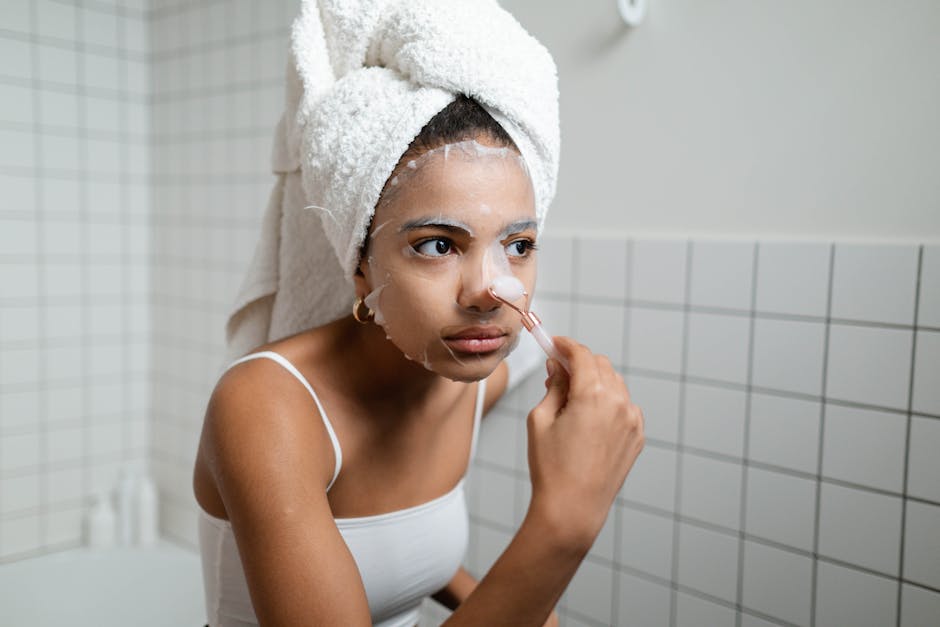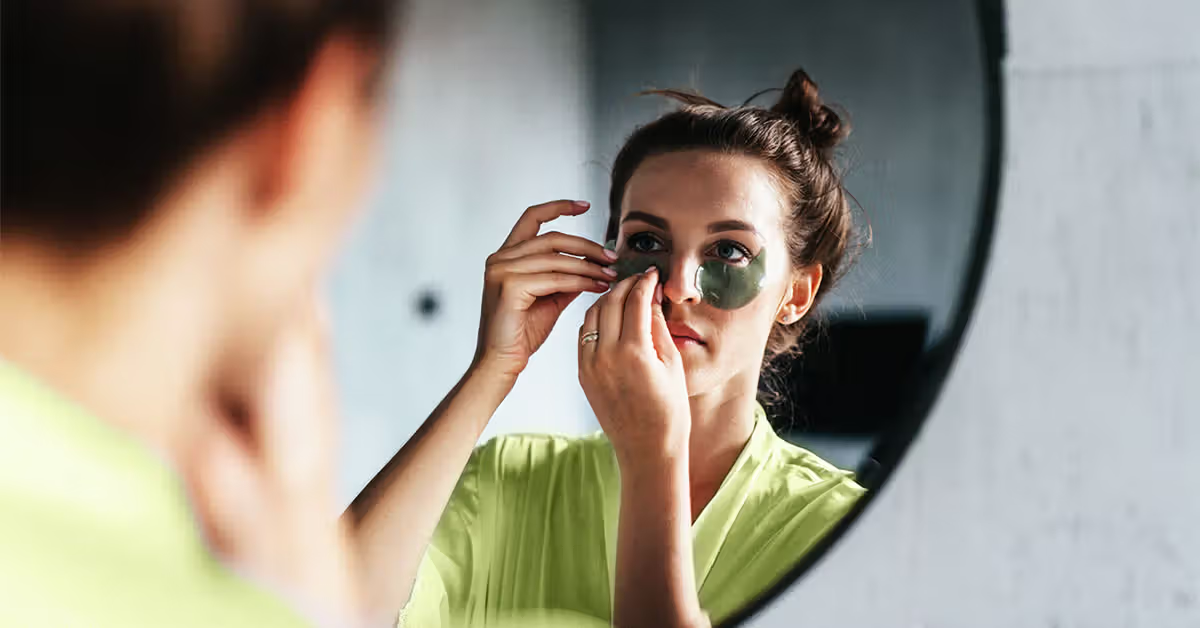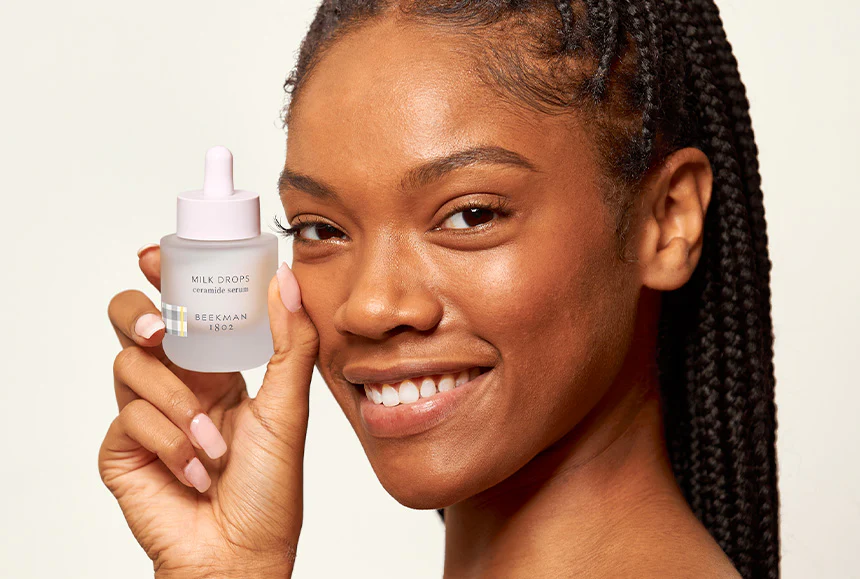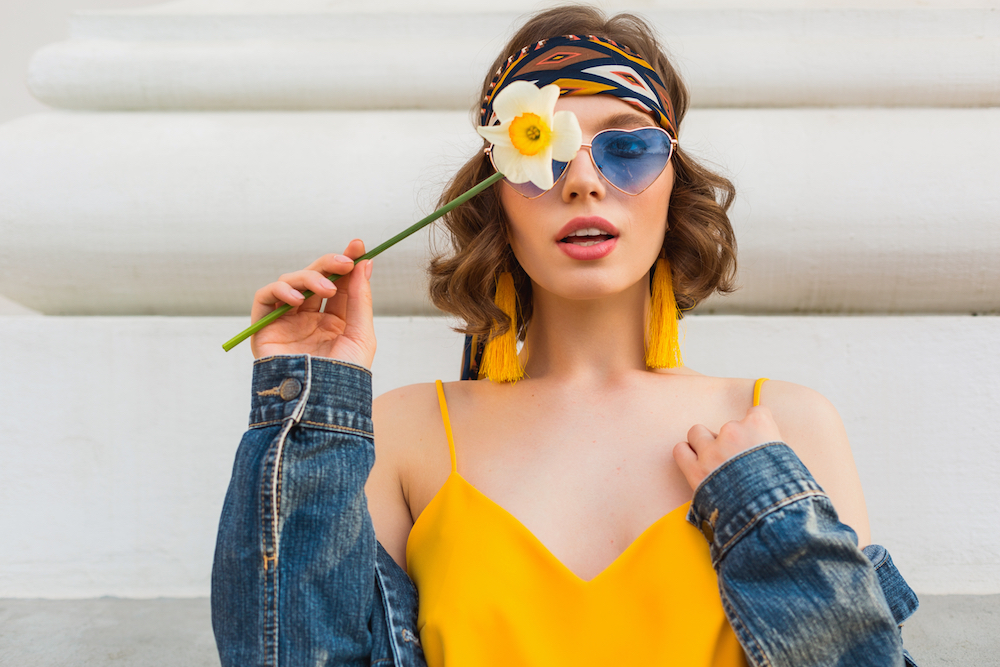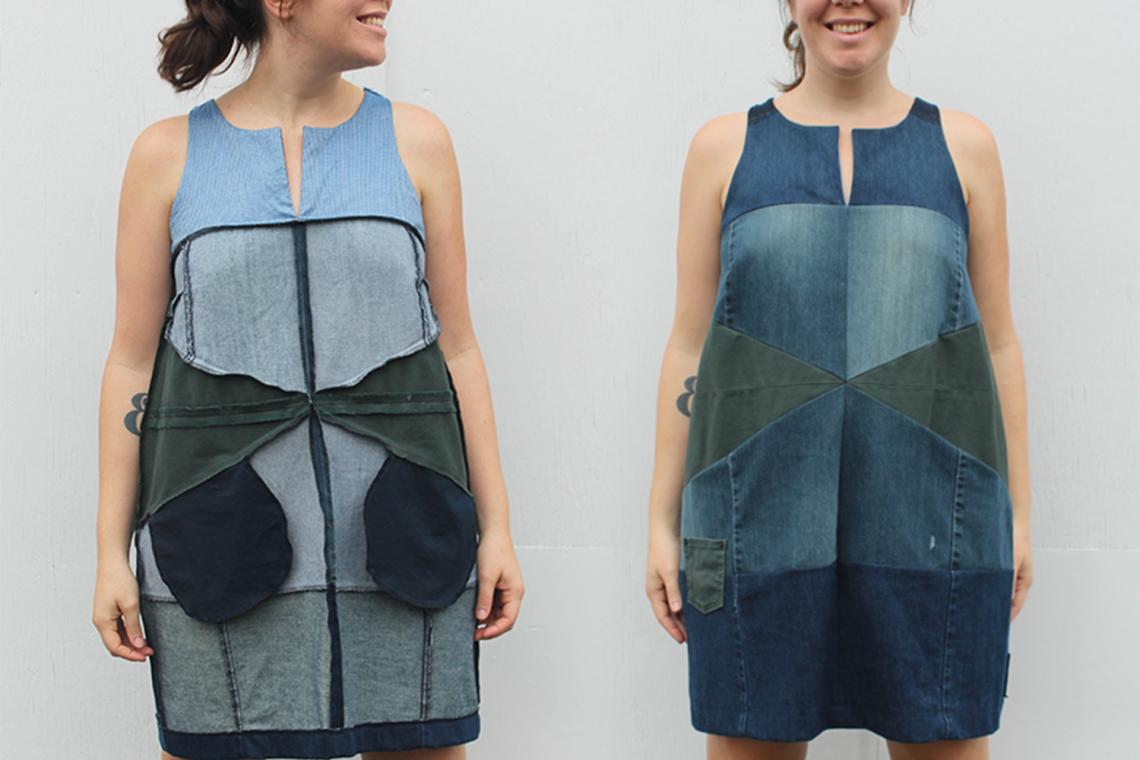Why Clean Beauty Matters: The Truth About What You Put on Your Skin
Looking for clean beauty tips to detoxify your routine? Here’s what you need to know:
- Check ingredients using apps like Clearya, ThinkDirty, or EWG Skin Deep
- Avoid fragrance/parfum which can hide up to 100 undisclosed chemicals
- Start with daily essentials (moisturizer, deodorant, sunscreen) when transitioning
- Choose products with third-party certifications like MADE SAFE or EWG Verified
- Shop at vetted clean beauty retailers who do extensive background checks
Clean beauty tips are more important than ever as consumers become aware of what’s actually in their personal care products. While the European Union has banned over 1,600 ingredients in cosmetics, the United States restricts only 11. This stark contrast highlights why many people are taking matters into their own hands.
The average woman uses 12 personal care products daily, exposing herself to 168 unique chemicals. What’s more concerning is that up to 60% of what you put on your skin can be absorbed into your bloodstream.
“I wouldn’t put on my face anything I wouldn’t feel comfortable eating,” notes one clean beauty advocate in our research—a simple but powerful perspective that’s driving the clean beauty movement.
Clean beauty isn’t just about avoiding harmful ingredients; it’s about transparency, minimalism, and making choices that benefit both your health and the planet. You don’t need to overhaul your entire bathroom cabinet overnight. Most experts recommend a gradual approach, replacing products as they run out to make the transition more sustainable for both your wallet and the environment.
The journey to clean beauty can feel overwhelming at first. Terms like “natural,” “organic,” and “non-toxic” are often used interchangeably but mean different things. The key is to focus on progress, not perfection—even small changes can make a significant difference.

Hack #1 – Read Labels Like a Scientist (Without the PhD)
Remember the first time you flipped over a beauty product and tried to read that tiny ingredient list? For me, it was like trying to decipher a foreign language after three cups of coffee. Methylisothiazolinone? I can barely pronounce it, let alone know if I should be putting it on my face!
Here’s the good news: you absolutely don’t need a chemistry degree to make smart choices about your beauty products. You just need to know what matters and have the right tools in your corner.
When we’re looking for clean beauty tips, understanding labels is the foundation of everything. According to research, most questionable ingredients fall into three main buckets:
Irritants and allergens (like certain preservatives and sulfates) that can cause skin reactions; potential endocrine disruptors (including parabens and certain chemical sunscreens) that might mess with your hormones; and potential carcinogens (such as formaldehyde-releasing preservatives) that have been linked to serious health concerns.
But rather than memorizing hundreds of tongue-twisting ingredients (who has time for that?), I’ve found it much more practical to use digital tools that do the heavy lifting. Think of these as your personal beauty detectives!
Quick-Scan Tools & Databases
The beauty of today’s clean beauty tips is that technology makes label-reading nearly effortless:
Clearya has become my shopping buddy – this free app and browser extension automatically scans products as you browse online stores. It gives you a heads-up about potentially harmful ingredients and even suggests safer alternatives. I’ve avoided countless questionable purchases thanks to this little gem.
ThinkDirty is perfect for in-store shopping moments. Just scan a product barcode and instantly get a safety rating from its database of over 850,000 products. No more standing in aisles googling weird ingredients!
EWG Skin Deep is like the encyclopedia of ingredient safety. Their extensive database lets you look up both products and individual ingredients with detailed safety assessments. When I’m doing deeper research, this is my go-to resource.
MADE SAFE certification is one to look for on packaging – it ensures products are made without known harmful chemicals and is considered one of the gold standards in the industry.

One of my favorite shortcuts is shopping at dedicated clean beauty retailers. Many specialty stores have already done much of the homework for you – they employ strict standards, often banning hundreds more ingredients than required by law. It’s like having a team of researchers vetting products before they even hit the shelves.
Something important to remember: ingredient lists don’t always tell the whole story. Concentration matters (how much of something is actually in there), and formulation affects how ingredients interact with your skin. This is where those expert-curated stores and third-party certifications become your best friends.
Want to dive deeper into understanding beauty labels? Check out our comprehensive guide to reading clean beauty ingredients like a pro.
According to recent scientific research, the lack of regulation in the beauty industry makes consumer education more important than ever. But don’t worry – with these tools in your pocket, you’re already ahead of the game!
Hack #2 – Focus on High-Impact Swaps First: The “Clean Beauty Tips” Priority Pyramid
I remember when I first decided to clean up my beauty routine – I excitedly tossed everything in my bathroom cabinet and spent a small fortune replacing it all at once. Big mistake! Not only did my wallet take a hit, but I ended up with products I didn’t even like.
That’s why at Beyond Beauty Lab, we developed what we lovingly call the “Clean Beauty Tips Priority Pyramid” – a practical approach to transitioning that gives you the biggest health benefits without overwhelming your life (or draining your bank account).
The logic is simple: start with products that touch your skin most often, cover the largest areas, and stay on rather than washing off. These have the highest potential impact on your wellbeing.
“If a product stays on skin all day or covers a large area, opt for cleaner options first,” advises clean beauty expert Sasha Plavsic – and we couldn’t agree more.
Did you know the average person is exposed to more than 100 chemicals from personal care products before even leaving the house each morning? By strategically focusing on your most frequently used items, you can dramatically reduce this chemical load.
Here’s where to start your clean beauty journey:
First, tackle your deodorant. The underarm area contains lymph nodes that filter toxins, making this an extra-sensitive zone. Traditional antiperspirants often contain aluminum compounds and synthetic fragrance that you might want to reconsider.
Next, focus on moisturizer and face products since these stay on your skin all day and cover delicate facial areas where absorption is higher.
Sunscreen should follow – it’s something you (hopefully!) use daily, and conventional options may contain oxybenzone and other concerning filters that have shown up in bloodstream testing.
Then move to body lotion, which covers the largest organ of your body – your skin! With up to 60% potential absorption, what you smooth all over matters.
Finally, address shampoo and conditioner. Though these are rinse-off products, they’re used frequently and can contain harsh sulfates and silicones that may affect both your hair health and the environment.
“When I started my clean beauty journey, I made my first swap to a natural deodorant,” shares one of our team members. “Within weeks, I noticed less irritation and surprisingly, less odor once my body adjusted.”
Swap Smart, Not All at Once
You have two main paths when transitioning to clean beauty:
The Slow Swap approach means replacing products as they run out with cleaner alternatives. This method is gentle on your budget and reduces waste – plus it gives your skin time to adjust to new formulations one by one.
Alternatively, the Total Cleanse means replacing everything at once. While more expensive upfront, some people prefer this “fresh start” approach, especially if they’re addressing specific skin issues or health concerns.
“Start buying the clean version of what you’re about to run out of and build your collection over time so it’s not overwhelming and more wallet-friendly,” suggests one of our clean beauty advocates.
Want an immediate impact that costs nothing? Stop using products with “Fragrance” or “Parfum” on the ingredient list. Due to trade secret laws, these terms can legally hide up to 100 different chemicals without disclosure. Switching to fragrance-free options or products scented only with essential oils can immediately reduce your chemical exposure (though be cautious with essential oils too, as they can be irritating for some skin types).

Need more guidance on building your starter kit? Check out our detailed guide on what you really need to begin your clean beauty journey.
Hack #3 – Build a Minimal, Skin-Type-Specific Routine That Works
I’ll let you in on a little secret – most of us at Beyond Beauty Lab have been guilty of “shelfie excess.” One team member confessed she once juggled a whopping 22-step routine! Not only did this drain her wallet, but her skin actually rebelled against this product overload.
“I was convinced more products meant better skin,” she laughs. “Turns out, my poor skin barrier was crying out for simplicity.”
Dermatologists consistently confirm this truth: “By minimizing potentially irritating or drying products, the skin balances its natural oils, improving hydration and texture.” Your skin has incredible innate wisdom when we stop overwhelming it with too many ingredients.
The beautiful truth? You really only need four key products for a truly effective skincare regimen:
- Cleanser: To wash away daily grime and pollutants
- Serum: To deliver targeted active ingredients for your specific concerns
- Moisturizer: To hydrate and maintain a healthy skin barrier
- Sunscreen: To protect from UV damage (still the #1 cause of premature aging!)
This pared-down approach not only simplifies your morning and evening routines but makes transitioning to clean beauty tips much more manageable and budget-friendly.
One beauty editor we interviewed admitted, “I certainly did not have a simplified skin care routine on my 2024 bingo card, simply because I really love curating a beauty regimen. But within one week of paring down to just the essentials, my skin became plumper and less oily.”
The real magic happens when you personalize this minimal framework for your unique skin needs:
Clean Beauty Tips for Oily, Dry & Sensitive Skin
If you have oily or acne-prone skin, look for oil-free or “non-comedogenic” formulas that won’t clog pores. Gentle plant-based exfoliants like willow bark (nature’s salicylic acid) can help manage excess oil without stripping your skin. And here’s a counter-intuitive tip – don’t skip moisturizer! Often, oily skin is actually dehydrated skin desperately producing more oil to compensate.
For those with dry skin, cream or oil-based cleansers will be your best friends, preserving your skin’s natural moisture. Seek out humectants like hyaluronic acid and glycerin that draw water into the skin. Consider adding facial oils with jojoba or squalane – these closely mimic your skin’s natural sebum and absorb beautifully without feeling greasy.
If you have sensitive skin, less is truly more. Avoid essential oils, which despite being “natural” can be significant irritants. Look for products with minimal ingredient lists – fewer ingredients means fewer potential triggers. Calming botanicals like oat extract, calendula, or chamomile can help soothe reactivity while providing gentle nourishment.

Here’s a French-inspired clean beauty tip we’ve come to love: skip the morning cleanse. “Not washing in the morning helps keep skin soft and balanced by preserving natural oils and moisture,” explains a Parisian skincare expert we consulted. Instead, try refreshing with just micellar water or a simple splash of cool water to wake up your complexion.
Always remember to patch test new products, especially if your skin tends to be reactive. Apply a small amount on your inner arm for 24-48 hours before introducing it to your face. This simple step can save you from potential irritation and wasted money.
At Beyond Beauty Lab, we believe in “progress, not perfection.” Even if you can’t replace every product with a clean alternative immediately, reducing your overall exposure to potentially harmful ingredients is still a significant win for your skin health. Start with what touches your skin most frequently and build from there.
Hack #4 – DIY & Budget Genius: Kitchen-to-Face Recipes That Actually Work
Remember when your grandmother insisted honey could heal almost anything? Turns out, she might have been onto something! At Beyond Beauty Lab, we’ve finded that some of the most powerful skincare ingredients aren’t hiding in fancy packaging—they’re sitting right in your kitchen pantry.
“I was shocked when my homemade oatmeal mask calmed my redness better than my $65 cream,” confesses Sarah, one of our team members who acceptd clean beauty tips years ago. “It’s pretty amazing how your skin can benefit from using real ingredients, cutting back on alcohol and sugar, and drinking more water.”
Let me share some of our favorite kitchen-to-bathroom counter recipes that actually deliver results:
That rose water mist sitting in your fridge? It costs pennies to make but feels like luxury. Simply simmer organic rose petals in distilled water for about 20 minutes, strain, cool, and transfer to a spray bottle. Store it in your refrigerator and enjoy a refreshing, gentle toner for up to a week.
For an instant glow, nothing beats our honey-oatmeal cleansing mask. Ground oats provide gentle exfoliation while raw honey brings antibacterial properties and intense moisture. Mix two tablespoons of ground oats with a tablespoon of raw honey (add a tiny bit of water if needed), massage onto damp skin, and rinse after 10 minutes. Smooth skin!
Struggling with makeup removal? Organic coconut oil melts away even waterproof mascara without harsh chemicals. Just massage a small amount onto dry skin and wipe away with a warm, damp cloth. Your skin will thank you.
And for those between-wash days, our DIY dry shampoo is a game-changer. “We use dry shampoo allll the time—hence this DIY version,” notes one of our team members. Mix arrowroot powder or cornstarch with bentonite clay, add a few drops of essential oil if desired, and for dark hair, blend in some unsweetened cocoa powder. Apply to roots with a makeup brush, massage in, and brush through.
Beyond saving money (which we all appreciate), making your own beauty products lets you customize everything to your specific needs. No more compromising with “almost right” formulations or worrying about those long lists of preservatives.
Safety First When You Go Homemade
While I’m all for kitchen cosmetics, let’s talk about keeping things safe:
Watch shelf life carefully. Without commercial preservatives, homemade products spoil quickly. That gorgeous face oil might look fine after six months, but could be harboring unwelcome bacteria. Make small batches and refrigerate most concoctions.
Respect the power of essential oils. As one aromatherapist warned me, “One drop of peppermint essential oil equals about 28 cups of peppermint tea.” That’s potent stuff! Always dilute properly and never apply directly to skin.
Do your homework on ingredients. Not everything natural belongs on your face. Lemon juice, for example, appears in countless DIY recipes but can cause serious photosensitivity and irritation. Pinterest isn’t always right!
Cleanliness is non-negotiable. Use sterilized containers and tools to prevent contamination. Your kitchen isn’t a lab, but basic hygiene prevents turning your face mask into a science experiment.
Patch test everything. Even the most innocent-sounding ingredient can trigger reactions in some people. Always test new creations on a small area of skin first.

“Natural or organic ingredients can actually be more irritating than synthetic ones,” a dermatologist shared with us. “High concentrations of botanical extracts can cause irritation, allergic reactions, and UV sensitivity.” This doesn’t mean natural is bad—just that respect and research matter.
If mixing potions isn’t your thing, don’t worry! Many wonderful clean beauty brands now offer products with simple, food-grade ingredients at reasonable prices. The clean beauty movement has expanded beyond DIY enthusiasts to include options for everyone.
The key is finding what works for your skin, your schedule, and your values. Whether you’re a kitchen cosmetics wizard or prefer to purchase ready-made clean products, the goal remains the same: effective beauty routines without unnecessary chemical exposure.
Want more budget-friendly clean beauty tips? Check out our complete guide to clean beauty on a budget for even more ways to glow without breaking the bank.
Hack #5 – Think Beyond Your Skin: Sustainability, Advocacy & “Clean Beauty Tips” for the Planet
When we started our journey at Beyond Beauty Lab, we quickly realized that true clean beauty tips aren’t just about what goes on your skin—they’re about the bigger picture too. A product might have the cleanest ingredient list in the world, but if it comes in packaging that will sit in a landfill for 500 years, is it really “clean”?
“Clean is about a mindset… highest level of performance, craftsmanship, and luxury,” explains makeup artist Gucci Westman. I love this perspective because it reminds us to look at beauty holistically—considering both our personal health and our planet’s wellbeing.
Here’s how we’ve incorporated sustainability into our own clean beauty journeys (and how you can too):
Your product packaging makes a huge difference. Whenever possible, choose glass or aluminum containers—both can be recycled infinitely without losing quality. Many brands now offer post-consumer recycled (PCR) plastic options, which give existing plastic a second life instead of creating new waste. I’ve been delighted to see the rise of biodegradable or compostable packaging too—these innovations show how the industry is evolving.
What’s inside your products matters beyond your skin. Research how ingredients are harvested and look for certifications that ensure ethical practices. Rainforest Alliance, Fair Trade, and RSPO (Responsible Palm Oil) labels tell you a company cares about people and ecosystems. Did you know that “nearly 300 football-field-sized areas of rainforest are cleared each hour for palm oil production”? That statistic stopped me in my tracks and changed how I shop.

Before tossing those empty containers, consider giving them new life through creative upcycling. Those pretty glass serum bottles? They make charming mini flower vases. Empty moisturizer jars work perfectly for storing jewelry when traveling. My personal favorite: changing large lotion bottles into cute planters by adding drainage holes. As one eco-conscious friend told me, “These can make a delightful addition to your windowsill, bathroom shelf, or bedside table.”
How to Use Your Voice & Wallet
Your individual choices matter, but advocating for industry-wide change might be the most powerful clean beauty tip I can share:
Support legislative reform by connecting with organizations like the Environmental Working Group and Breast Cancer Prevention Partners. They’re fighting for stronger cosmetic regulations that would protect all of us. Sign their petitions, contact your representatives, and stay informed about proposed legislation.
Don’t be shy about asking questions! I’ve emailed brands directly about ingredients, sourcing practices, and sustainability commitments—and been surprised by how responsive many are. These inquiries show companies what consumers care about and drive meaningful change.
Share what you learn with friends and family, but keep it judgment-free. Small, friendly conversations about why you made certain swaps can spark curiosity and awareness in others. I’ve seen how one person’s journey can inspire an entire community.
Look for take-back programs when you’re ready to dispose of empties. Many brands partner with TerraCycle to recycle hard-to-process packaging, and some retailers offer in-store collection programs. Kiehl’s, MAC, and Lush are just a few companies with established recycling initiatives.
“Socially responsible buying is a significant driving force in the new economy,” notes one industry report, and the numbers back this up. The clean beauty market is projected to reach $22 billion by 2024—showing that our collective choices are reshaping the industry.
At Beyond Beauty Lab, we’ve witnessed how individual choices create ripples that become waves of change. Every purchase is essentially a vote for the kind of beauty industry you want to support. When enough of us vote for clean, ethical, sustainable products, companies have no choice but to listen.
Frequently Asked Questions about Clean Beauty Tips
What ingredients should I avoid first?
When I first dipped my toes into clean beauty, I felt overwhelmed by the endless “avoid” lists. After years of research at Beyond Beauty Lab, we’ve narrowed down the most concerning ingredients to focus on first:
- Parabens (methylparaben, propylparaben): These preservatives can mimic estrogen in the body and have been linked to reproductive issues
- Phthalates (often hiding behind the word “fragrance”): These chemicals help products stick to your skin but may disrupt hormone function
- Formaldehyde-releasing preservatives (like DMDM hydantoin): These slowly release small amounts of formaldehyde, a known carcinogen
- Ethoxylated agents (ingredients with “eth” in the name): These may be contaminated with 1,4-dioxane during manufacturing
- Synthetic fragrance: Perhaps the biggest offender, as it can legally conceal dozens of undisclosed chemicals
“The simplest first step anyone can take is ditching products with ‘Fragrance’ or ‘Parfum’ on the label,” shares one of our clean beauty experts. “This single change can dramatically reduce your exposure to potentially harmful chemicals.”
Are natural and organic ingredients always safer?
This question makes me smile because it highlights one of the biggest misconceptions in clean beauty. The truth? Not all natural ingredients are safe, and not all synthetic ingredients are harmful.
I’ve seen people develop terrible reactions to “all-natural” products while tolerating certain synthetic formulations perfectly well. Nature produces powerful compounds – poison ivy is 100% natural, after all!
Some important reality checks:
Natural ingredients can cause significant irritation and allergic reactions, especially essential oils and botanical extracts. The concentration matters tremendously – a small amount of lavender oil can be soothing, while a higher concentration might irritate your skin. Natural ingredients also vary in potency from batch to batch, making results less predictable.
Perhaps most surprisingly, some synthetic ingredients actually have better safety profiles than their natural counterparts. Synthetic vitamin C, for example, is often more stable and less irritating than natural forms.
“I’ve seen the clean beauty pendulum swing too far,” a dermatologist told us recently. “Some brands have replaced traditionally safe synthetic ingredients with natural alternatives that cause more problems.”
My advice? Evaluate each ingredient based on research rather than whether it comes from a lab or a plant.
How do I know a brand isn’t greenwashing me?
Ah, greenwashing – the marketing tactic that drives me crazy! As clean beauty tips have become trendy, so has the practice of making products appear clean without actually being clean.
After being fooled a few times myself, here’s how I now spot authentic brands:
Look for specifics instead of buzzwords. When a brand claims to be “non-toxic” or “clean” without explaining what that means to them, my skepticism meter goes up. Genuine clean brands define their standards clearly.
Third-party certifications are worth their weight in gold. MADE SAFE, EWG Verified, USDA Organic, and Leaping Bunny certifications require brands to meet rigorous standards that can’t be faked.
I always check the brand’s overall practices. Does the company share information about ingredient sourcing? Manufacturing processes? Packaging sustainability? True clean beauty brands tend to be transparent across all operations, not just ingredients.
Be wary of brands that highlight one clean ingredient while staying silent about problematic ones. I once found a “natural” shampoo that prominently featured argan oil on the label but contained synthetic fragrance and multiple preservatives of concern.
“Many brands have mastered the art of ‘clean-washing,'” an industry insider told us. “They’ve learned to use the language of clean beauty while still including problematic ingredients.”

My favorite verification method is using apps like Clearya or EWG’s Skin Deep database while shopping. These tools cut through marketing claims and analyze actual ingredients, helping you make truly informed choices about the products you bring home.
Conclusion
You don’t need a complete beauty overhaul or an unlimited budget to accept clean beauty. The journey is about progress, not perfection—and these five hacks make that journey both accessible and enjoyable. By learning to read labels with confidence, focusing on your most impactful daily products first, simplifying your routine to what your skin actually needs, exploring budget-friendly DIY alternatives, and considering the bigger environmental picture, you’re creating positive change with every choice.
At Beyond Beauty Lab, we’ve walked this path ourselves, stumbling occasionally but learning continuously. We’ve finded that small, consistent changes often lead to the most sustainable changes.
“I started by just replacing my daily moisturizer with a cleaner option, and six months later, I realized most of my routine had gradually shifted,” shares one of our team members. “It never felt overwhelming because I took it one product at a time.”
Clean beauty tips aren’t about following rigid rules or chasing perfection. They’re about becoming more conscious of what you put on your body and making choices aligned with your personal values and concerns.
The clean beauty movement continues to evolve, pushing the entire industry toward greater transparency and responsibility. Your participation—whether swapping one product or completely changing your routine—contributes to this positive momentum.
We invite you to continue exploring with us at Beyond Beauty Lab, where we’re constantly researching, testing, and sharing insights about clean beauty, skincare, and holistic wellness. Our clean beauty and wellness resources offer deeper dives into topics that might spark your interest as you continue your journey.
Which hack resonates most with you? Perhaps you’ll start by downloading a label-scanning app, or maybe you’ll try a simple DIY rose water toner this weekend. Whatever your next step, each mindful choice is worth celebrating.
Because true beauty isn’t just about what’s on your skin—it’s about honoring your health, respecting the planet, and embracing the joy of conscious self-care.


